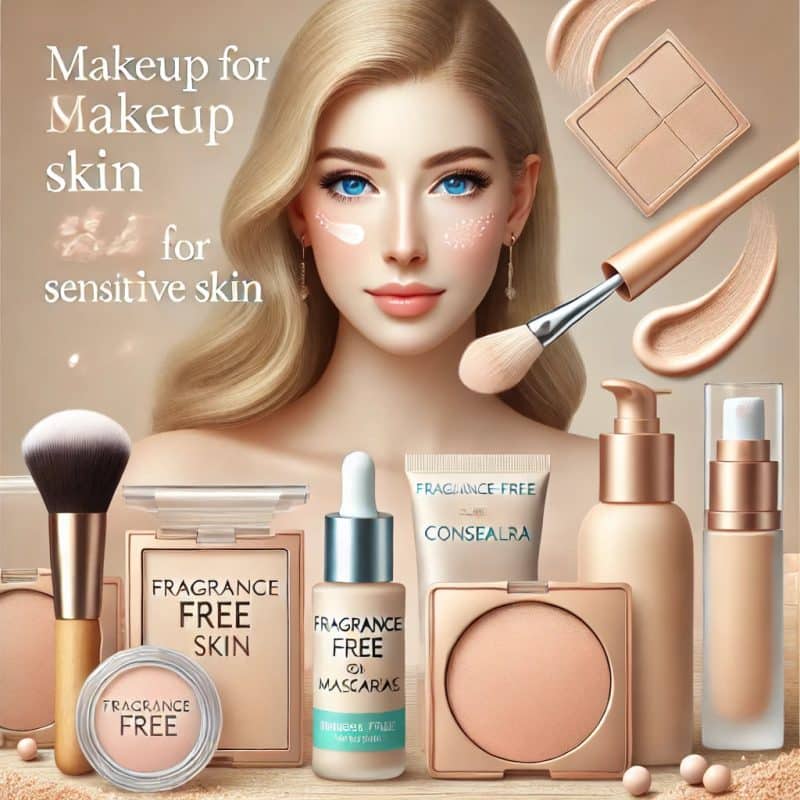Blog
Exploring Turmeric Serum: Benefits, Uses, and How to Incorporate It into Your Skincare Routine

Turmeric Serum, widely recognized for its anti-inflammatory and antioxidant properties, has become a popular ingredient in skincare products. Turmeric serums, in particular, are valued for their ability to enhance skin health, brighten the complexion, and reduce signs of aging. This article explores the benefits, uses, and ways to integrate turmeric serum into your skincare routine.
What is Turmeric Serum?
Turmeric serum is a concentrated skincare product infused with turmeric extract. The active ingredient, curcumin, offers numerous benefits for the skin, including reducing inflammation, combating free radicals, and promoting an even skin tone. Derived from the Curcuma longa plant, turmeric has been used for centuries in Ayurvedic and traditional Chinese medicine for its healing properties.
Benefits of Turmeric Serum
Turmeric serum provides a variety of benefits, making it a versatile addition to any skincare routine. Here are some key advantages:
- Reduces Inflammation: Turmeric’s anti-inflammatory properties help calm irritated skin, making it suitable for conditions like acne and rosacea. This is particularly beneficial for those with sensitive skin or chronic inflammatory skin conditions.
- Brightens Skin: Regular use of turmeric serum can help lighten dark spots and even out skin tone, resulting in a brighter complexion. Curcumin, the active component in turmeric, inhibits melanin production, which helps to fade hyperpigmentation and sunspots.
- Antioxidant Protection: The antioxidants in turmeric protect the skin from environmental damage and premature aging. These antioxidants neutralize free radicals, which are responsible for oxidative stress that damages skin cells and leads to signs of aging.
- Anti-Aging Properties: Turmeric promotes collagen production, reducing the appearance of fine lines and wrinkles. Collagen is essential for maintaining the skin’s elasticity and firmness, and its production declines as we age. By stimulating collagen synthesis, turmeric serum helps keep the skin looking youthful.
- Moisturizes: Turmeric serum helps retain moisture in the skin, keeping it hydrated and supple. Hydrated skin is less likely to develop fine lines and maintains a healthy, plump appearance.
- Heals and Soothes: It accelerates the healing of acne scars and other blemishes, promoting clearer skin. The anti-inflammatory and antibacterial properties of turmeric also help reduce the occurrence of acne by controlling the growth of acne-causing bacteria.
Uses of Turmeric Serum
Turmeric serum can be used in various ways to improve your skin’s health and appearance. Here are some effective uses:
- Daily Skincare Routine: Incorporate turmeric serum into your daily regimen by applying it after cleansing and toning, and before moisturizing. This helps maximize the serum’s benefits by ensuring it is absorbed into the skin properly.
- Spot Treatment: Use turmeric serum on specific areas with hyperpigmentation, acne scars, or redness for targeted benefits. Applying the serum directly to problem areas can help expedite the healing process and reduce discoloration more effectively.
- Brightening Treatment: Apply it to the entire face to achieve an overall brighter and more even complexion. This is particularly beneficial for those with dull or uneven skin tone, as it can enhance radiance and clarity.
- Anti-Aging Regimen: Use it regularly to reduce the appearance of fine lines and wrinkles and maintain youthful skin. Consistent use of turmeric serum can help improve skin texture and elasticity, making it a valuable addition to an anti-aging skincare routine.
- Post-Sun Exposure Care: After spending time in the sun, applying turmeric serum can help soothe the skin and reduce inflammation caused by UV exposure. Its antioxidant properties also help repair damage caused by free radicals.
How to Incorporate Turmeric Serum into Your Routine
Adding turmeric serum to your skincare routine is simple. Follow these steps to maximize its benefits:
- Choose the Right Product: Select a turmeric serum that suits your skin type and addresses your specific concerns. Look for products with high-quality ingredients and no harmful additives.
- Patch Test: Perform a patch test before using the product extensively to ensure you do not have an adverse reaction. Apply a small amount of serum to a discreet area of skin and wait 24 hours to check for any irritation or allergic reactions.
- Cleanse and Tone: Start with a clean face. Use a gentle cleanser and toner to prepare your skin. Cleansing removes dirt and impurities, while toning balances the skin’s pH and preps it for better absorption of the serum.
- Apply Turmeric Serum: Apply a few drops of the serum to your face and neck, gently massaging it into the skin. Use upward and outward motions to ensure even distribution and absorption.
- Moisturize: Follow with a moisturizer to lock in the serum and keep your skin hydrated. Moisturizing helps create a protective barrier that seals in the serum’s active ingredients, allowing them to work more effectively.
- Use Sunscreen: In the morning, apply sunscreen after the serum and moisturizer to protect your skin from UV damage. Sunscreen is crucial in preventing further hyperpigmentation and protecting the skin from harmful sun exposure.
- Evening Routine: At night, apply the serum after cleansing and toning, followed by a night cream or a more intensive moisturizer. This helps repair and rejuvenate the skin while you sleep.
Potential Side Effects
While turmeric serum is generally safe for most skin types, it is essential to be aware of potential side effects:
- Allergic Reactions: Some individuals may be allergic to turmeric. Perform a patch test to check for any adverse reactions. If you experience itching, redness, or swelling, discontinue use immediately and consult a dermatologist.
- Skin Staining: Turmeric can temporarily stain the skin. If this happens, wash your face with a gentle cleanser to remove the yellow tint. Using a makeup remover or micellar water can also help.
- Sensitivity: If you have sensitive skin, use a serum with a lower concentration of turmeric to avoid irritation. Start with a small amount and gradually increase as your skin builds tolerance.
Selecting the Right Turmeric Serum
When choosing a turmeric serum, consider the following factors:
- Ingredients: Look for a product with natural ingredients and avoid those with harsh chemicals or artificial fragrances. A high-quality turmeric serum should contain pure turmeric extract and other beneficial ingredients like hyaluronic acid, vitamin C, or niacinamide.
- Formulation: Choose a serum that matches your skin type and addresses your specific skincare needs. For example, if you have dry skin, look for a hydrating formula with added moisturizers.
- Brand Reputation: Opt for reputable brands known for their quality and effectiveness. Read reviews to make an informed decision. Brands with positive customer feedback and transparency about their ingredients and manufacturing processes are generally more reliable.
- Concentration of Turmeric: Ensure the serum has an effective concentration of turmeric extract. Too little may not provide the desired benefits, while too much can cause irritation.
- Packaging: Turmeric serum should be packaged in a way that preserves its potency. Look for products in dark or opaque bottles that protect the serum from light and air exposure.
- Price: While price isn’t always an indicator of quality, be wary of products that are significantly cheaper than others on the market. High-quality ingredients and manufacturing processes often come at a higher cost.
How Turmeric Compares to Other Popular Skincare Ingredients
Turmeric is often compared to other popular skincare ingredients. Here’s how it stacks up:
- Vitamin C: Both turmeric and vitamin C are known for their brightening and antioxidant properties. However, turmeric has additional anti-inflammatory benefits, making it suitable for sensitive and acne-prone skin.
- Niacinamide: Niacinamide (vitamin B3) and turmeric both help improve skin tone and texture. Niacinamide is particularly effective at minimizing pores and regulating oil production, while turmeric excels in reducing inflammation and promoting healing.
- Retinol: Retinol is a powerful anti-aging ingredient that promotes cell turnover. While turmeric also has anti-aging benefits, it is gentler on the skin and can be used by those with sensitive skin who may not tolerate retinol well.
- Hyaluronic Acid: Hyaluronic acid is known for its hydrating properties. Turmeric complements hyaluronic acid by providing additional antioxidant and anti-inflammatory benefits, making them a great combination for hydrated and healthy skin.
Frequently Asked Questions About Turmeric Serum
- Can I use turmeric serum every day? Yes, turmeric serum can be used daily. Incorporate it into your morning and evening skincare routines for the best results. Start with a small amount to ensure your skin tolerates it well, then gradually increase usage.
- Is turmeric serum suitable for all skin types? Turmeric serum is generally suitable for all skin types, including oily, dry, sensitive, and combination skin. However, those with very sensitive skin should perform a patch test first to avoid potential irritation.
- Can turmeric serum replace my moisturizer? No, turmeric serum should not replace your moisturizer. It is designed to be used in conjunction with other skincare products. Apply the serum before your moisturizer to ensure your skin stays hydrated and protected.
- How long does it take to see results from turmeric serum? Results can vary depending on your skin type and the specific concerns you are addressing. Some people may see improvements in their skin tone and texture within a few weeks, while others may take longer. Consistent use is key to achieving the best results.
- Can I use turmeric serum with other skincare products? Yes, turmeric serum can be used with other skincare products. It pairs well with ingredients like hyaluronic acid, vitamin C, and niacinamide. However, avoid using it with strong acids or exfoliants that may cause irritation.
- Does turmeric serum have a strong smell? Turmeric does have a distinct earthy scent, but most high-quality serums are formulated to minimize the smell. If you are sensitive to scents, look for serums that mention a mild or neutral fragrance.
- Can turmeric serum help with acne? Yes, turmeric serum can help with acne. Its anti-inflammatory and antibacterial properties make it effective in reducing acne breakouts and soothing inflamed skin. It can also help fade acne scars and hyperpigmentation.
Conclusion
Turmeric serum offers a range of benefits, from reducing inflammation and brightening the skin to combating signs of aging and moisturizing. By incorporating turmeric serum into your daily skincare routine, you can achieve healthier, more radiant skin. Whether you have oily, dry, sensitive, or combination skin, turmeric serum can be a valuable addition to your skincare arsenal. With consistent use and the right product, you can enjoy the numerous benefits that turmeric serum has to offe


